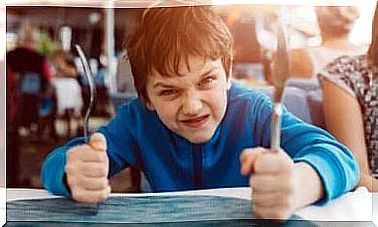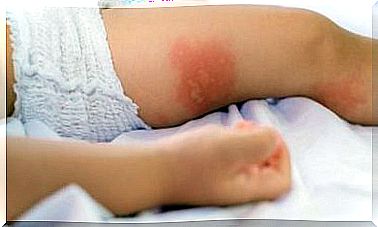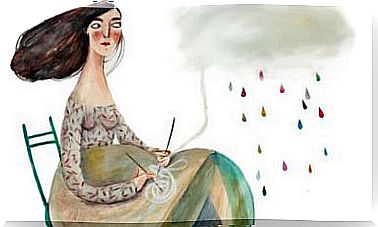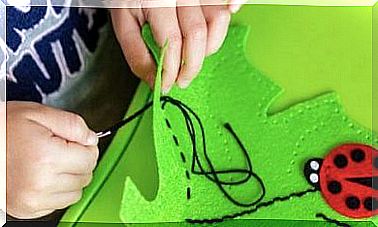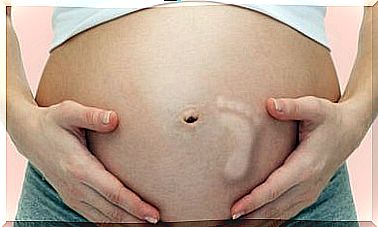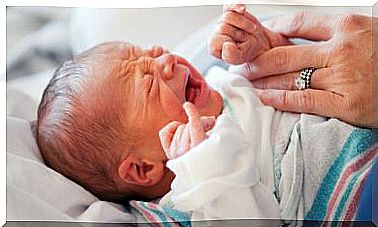The Moro Reflex Or Bracket Reflex In Babies
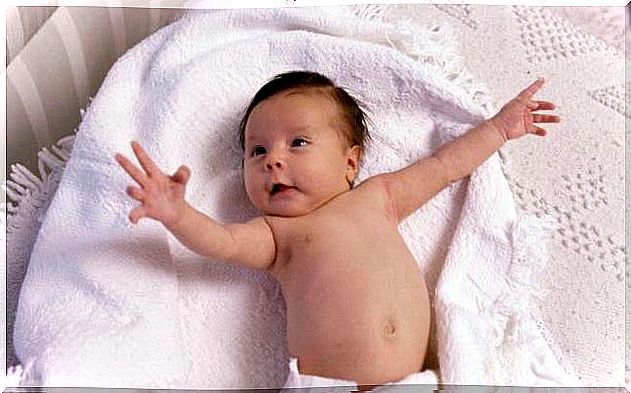
The Moro reflex is one of the first human clinging reflexes. When our children begin to show these reflexes, they usually draw a lot of attention. So much so that we sometimes get frightened when we see those sudden clasp reflexes that make babies open their arms and get stiff.
First of all, you should know that this is not a bad thing. It’s just an automatism or involuntary reflex that disappears after 4 to 5 months. In this article, we explain this reflex to answer your questions.
Why is it called the Moro Reflex?
The Moro reflex owes its name to the Austrian pediatrician who studied it at the beginning of the 20th century: Ernst Moro. And it is defined as the instinctive response that occurs when the child realizes that they have no secure support or when suddenly their position is changed.
This reflex can also trigger an unexpected sound or when babies notice them falling on their backs. It is a really crucial reflex in the development of babies’ nervous systems.
The interesting thing here is that it is a reaction that is closely related to fear or threat. To the point that the Moro reflex is considered to be the only fear that has not been learned.
How, when and why
Since the baby’s nervous system is developing (among other things) during the first few months of life, it is very common for you to see a number of changes, such as crying or the Moro reflex. In other words, involuntary reflexes show us that the baby is developing normally.
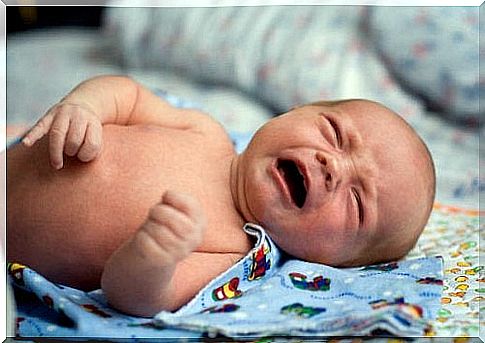
Those who study and monitor these types of reflexes are the doctors, and especially the pediatricians. You will be able to confirm whether or not the baby and nervous system are developing properly. To do this, they put the baby in a specific position to fool the baby’s brain and trick it into producing the reflex that they want to observe.
It’s a little experiment to confirm or rule out the Moro reflex in the baby. During the examination, the pediatrician places the baby on a soft pillow, takes his head in his hands and pretends to drop it for a moment, although of course he immediately catches it with his hands before it touches the pillow.
Why do you do that? Because the automatic response or reflex that doctors want to watch is triggered when the baby is made to believe that he is falling. BUT, the child’s body is not lifted, only the weight is removed to simulate the sensation of falling.
This feeling of falling is said to scare the baby. The baby’s next normal reaction is to stretch their arms out sideways and palms up with their thumbs flexed. When the shock is over and the baby relaxes again, it pulls its arms back against the body with bent elbows.
We must remember that babies’ brains are still maturing. Sometimes this reflex is also evoked in dreams. Sometimes babies react with the Moro effect even after sneezing. An unexpected noise or tickling changes your – as yet immature – nervous system, which triggers the appropriate response.
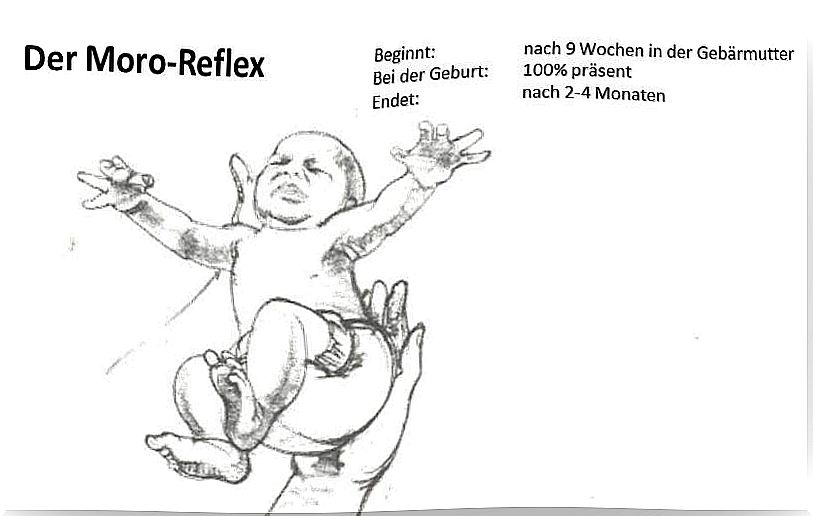
The Moro reflex is a necessary developmental experience, but uncomfortable for the baby. This reflex is an instinctive survival mechanism.
For the baby’s parents, the first time they see this reflex can be really dramatic as their baby stiffens and even changes their skin tone. The blood pressure rises because of the horror. However, all of this falls under the normal development parameters.
After those 5 or 6 seconds of fear, it is normal for the babies to cry bitterly . It is extremely important that you feel safe after this shock and that we help you relax again.
There are even babies who have the Moro reflex in their cradle and even while they sleep. Suddenly they stretch their arms, stay rigid and cry instantly.
How is the Moro reflex noticed in babies?
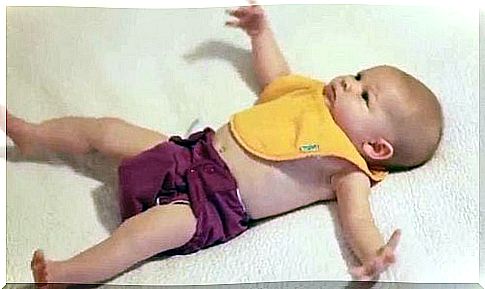
- Startled look in the baby’s eyes. Eyes wide open.
- The baby will stretch out their arms, palms up, and flex their thumbs. After a few seconds the reflex ends, the body relaxes and the arms are pulled back towards the body.
- Sudden crying.
What if the baby doesn’t show this reflex?
If the pediatrician notices the lack of this reflex, a problem in the nervous system is suspected. He therefore examines whether there is unilateral paralysis, another type of paralysis, or a simple fracture of the collarbone. If the reflex persists after 6, 7, or 8 months of life, it may also be due to a neurological problem.
Every time your baby has this reflex, you should try to calm them down. Don’t take your baby in your arms right away. Caress it and gradually let it relax. Until the shock passes and the baby no longer feels any danger. By your side, they will feel protected and reassured.
If your baby has this reflex all the time, see your pediatrician. But remember: the Moro reflex is an innate movement that mirrors the normal development of the newborn. After about 4 or 5 months it will go away.

